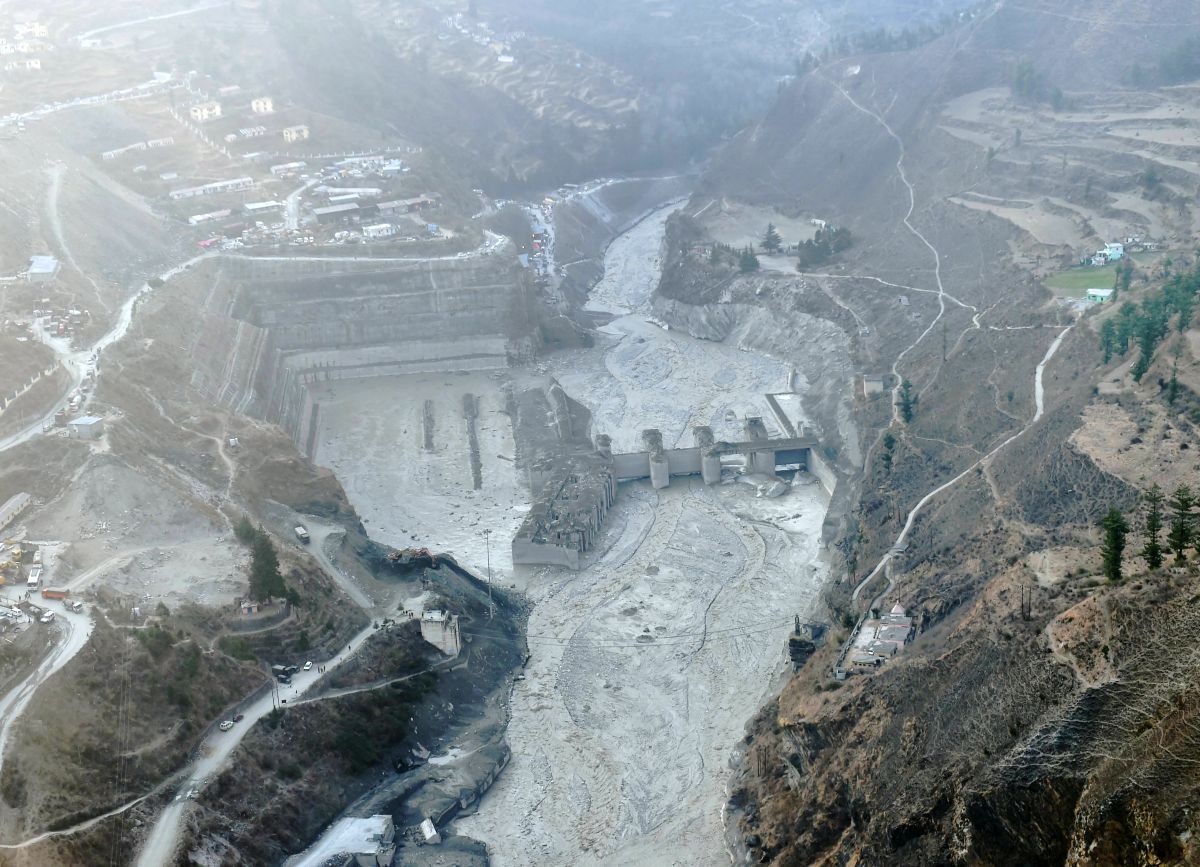'Geological processes occur at time scales that are beyond human imagination, but we need to understand these events.'

"If we are building infrastructure in the most fragile zones, we have to prepare ourselves for extreme events," warns Dr Pradeep Srivastava, a scientist at the Wadia Institute of Himalayan Geology based in Dehradun, Uttarakhand, in part two of an informative interview to Prasanna D Zore/Rediff.com.
How many of the recommendations given by the Wadia Institute of Himalayan Geology in 2013, to prevent or reduce losses if a Kedarnath-like tragedy were to reccur, were violated or accepted before construction activity began in Uttarakhand?
I will not say anything about the violations because but after that (our recommendations were given) no newer dams have come up.
The construction work on the existing dams (which were completely washed away by the Joshimath avalanche), which were actually stopped by the Supreme Court, had begun somehow by using some loopholes in law, I don't know how.
How?
There are 46 such dams on which construction is happening (despite the Supreme Court order to stop work at these sites) across the Himalayas; the direction (from the Supreme Court was there) and the committee was set up, but definitely the ministries or the agencies that allowed the construction work may have used some kind of loose end in the direction (given by the Supreme Court and began the construction work).
After the 2013, we were among the several other expert agencies that gave our recommendations and, in fact, the government actually invested so much to understand that event.
The Wadia Institute of Himalayan Geology was given the task of mapping the disasters. We mapped all the landslides across the Alaknanda, Bhagirathi, and other major rivers in the Himalayas.
Could you tell us more about this report?
What (report) we have made was about understanding the 2013 event (the Kedarnath tragedy) and give recommendations later.
What were these recommendations that the Wadia Institute of Himalayan Geology suggested and how could they help avoid such disasters?
We said that geology of Himalayas can be used in predictive models and the institutions of the Government of India have the potential to identify the zones that are most vulnerable or when such kind of events could take place.
How many vulnerable zones did your report map in this area?
Himalaya is an east-west trending mountain belt, roughly.
If you move northward straight from Dehradun or Haridwar, you reach Chamoli and then you reach those places, which are very steep and this belt is laterally east-west trending, which is around 50-60 kilometres wide and we are saying that this belt is very vulnerable as far as flash floods and resulting disasters are concerned.
These disasters are unstoppable; but we can plan accordingly (to minimise its impact): Build up roads, but don't cut the trees, don't disturb the hill slopes, don't disturb the vegetation.
If you leave the landscape in wilderness for a while it stabilises by itself.
If you keep disturbing the landscape it will definitely lead to landslides, flash floods. It's common sense kind of science.
What kind of construction activity are we seeing across this 50-60 km wide stretch of the Himalayas that your study says are the most vulnerable?
The Char Dham project and the roads leading to it which are around 12 metre wide; many expert committees recommended that road widening should not be there.
There is a difference of opinion between the government and a section of scientists, Then there is the other set of scientists who see no problem with construction activities in this region if there are proper engineering solutions.
But in my opinion such engineering solutions work only when there are fair weather conditions; these solutions have not stood the test of disasters, which is the ultimate test of such solutions.
Our roads and bridges and plants can sustain the impact of regular floods, landslides or rainfall; but these kinds of events happen once in 50 years; these are outliers but they are the most damaging.
If we are building infrastructure in the most fragile zones, we have to prepare ourselves for extreme events.
We are not prepared for these outliers; the dam under construction at the NTPC plant collapsed was worth Rs 1,600 crore (Rs 16 billion).
The extent of loss at Rishiganga is still to be accounted for. We are staring at close to Rs 4,000 crore-Rs 5,000 crore (Rs 40 billion to Rs 50 billion) loss, at least and almost 200 people losing their lives. There is lot at stake.
These events happen not during one generation. It happens beyond that.
These events cook themselves beyond human timescales; like the event (the flash floods at Chamoli) that occurred was cooking for hundred years or so and it just crossed the threshold (on February 7) and they (the rocks) fell (causing avalanches and flash floods and erasing entire dams and power projects).
Geological processes occur or take shape at time scales that are beyond human imagination; but we need to understand these events.
If we are going into the most fragile zones, we should have solid, scientific, time-tested plans in place.
The lower reaches of the Himalayas are not that fragile; if you look at the Tehri dam and the dam at Srinagar (in Uttarakhand) they were able to absorb the 2013 floods because they are located in the lower reaches of the Himalayas where the gradients are very gentle as compared to higher Himalayas. So these dams (Tehri and Srinagar) were able to act as a cushion.
We believe that in the lower reaches we can still afford to disturb the ecology, whereas in the high reaches the vulnerability is too high and a lot is at stake and at times we are just not able to manage losses and disasters because you cannot fight against mighty natural forces.
There is no way to fight the debris flowing down a steep gradient at high speeds.